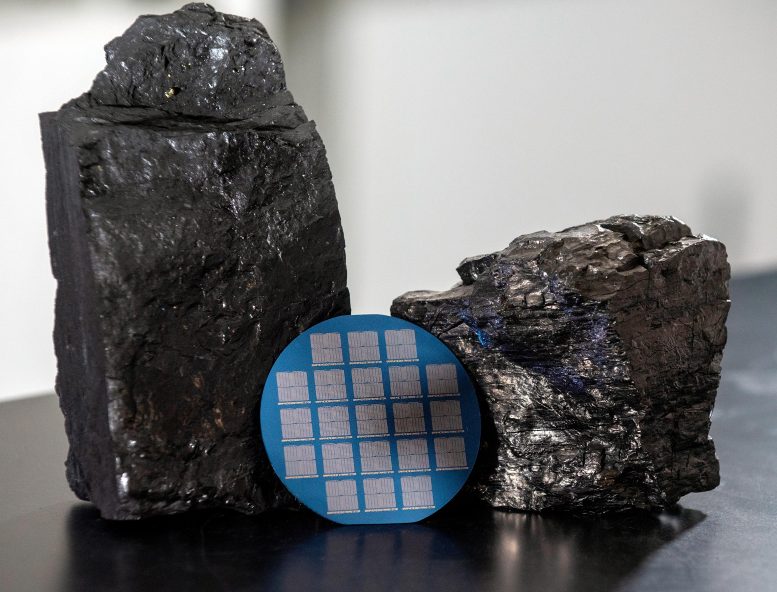
A wafer containing memristors fabricated with high-quality two-dimensional carbon processed from bituminous Blue Gem coal mined in southeastern Kentucky, two samples of which are shown here. Credit: The Grainger College of Engineering at University of Illinois Urbana-Champaign
Researchers have transformed coal into high-purity materials for use in next-generation electronic devices, marking a significant shift in its economic and technological applications.
Coal is an abundant resource in the United States that has, unfortunately, contributed to climate change through its use as a fossil fuel. As the country transitions to other means of energy production, it will be important to consider and reevaluate coal’s economic role. A joint research effort from the University of Illinois Urbana-Champaign, the National Energy Technology Laboratory, Oak Ridge National Laboratory, and the Taiwan Semiconductor Manufacturing Company (TSMC) has shown how coal can play a vital role in next-generation electronic devices.
“Coal is usually thought of as something bulky and dirty, but the processing techniques we’ve developed can transform it into high-purity materials just a couple of atoms thick,” said Qing Cao, a U. of I. materials science & engineering professor and a co-lead of the collaboration. “Their unique atomic structures and properties are ideal for making some of the smallest possible electronics with performance superior to state-of-the art.”
A process developed by the NETL first converts coal char into SciTechDaily